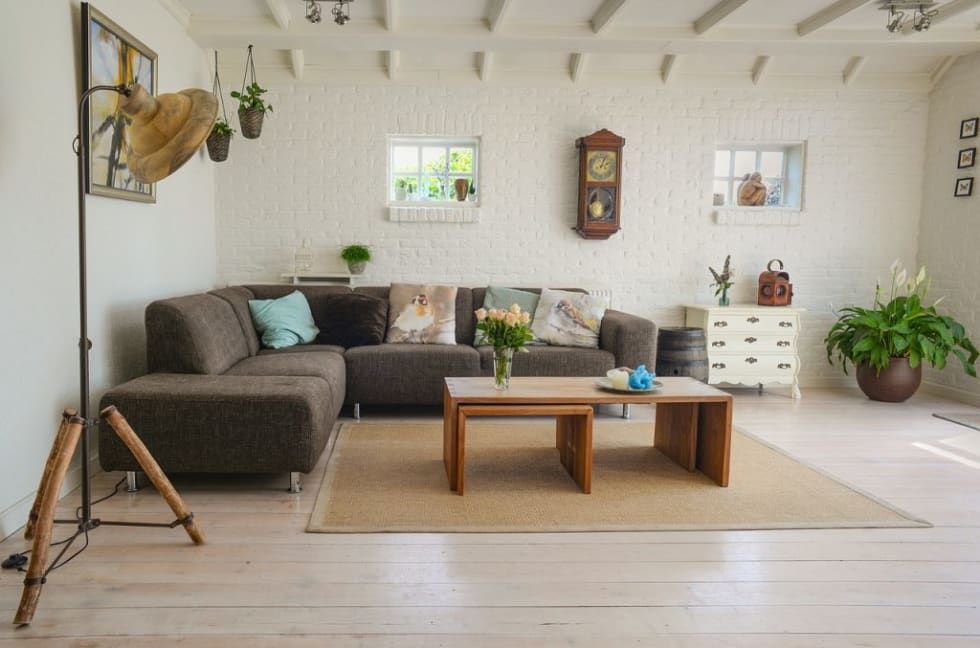The Pembroke
- 113 units available
- 1 bed • 2 bed
- Amenities
In unit laundry, Granite counters, Hardwood floors, Dishwasher, Pet friendly, 24hr maintenance + more

A furnished apartment usually comes with essential furniture and sometimes décor, while an unfurnished unit is a blank slate that tenants furnish themselves. Furnished apartments can be an appealing option for renters looking for more convenience or who need to move suddenly and don't have much furniture.
In this guide on the differences between a furnished and unfurnished apartment, we’ll break down:
By the end of this guide, you’ll know exactly which type of apartment fits your budget, lifestyle, and long-term plans.
| Reality Check | Furnished Apartment | Unfurnished Apartment |
|---|---|---|
| Move-in effort | Low – just bring your bag | High – you’ll need a moving truck |
| Monthly rent | Higher – convenience comes at a cost | Lower – but upfront furniture spend adds up |
| Personalization | Minimal – you live with what’s there | Max – make it totally yours |
| Lease flexibility | More common for short-term stays | Better for long-term renters |
| Added Upfront costs | Low (furniture’s included ) | High (couch, bed, table, and more) |
| Ideal for | Relocators, interns, short-term pros | Nesters, planners, long-haulers |
A furnished apartment comes with all of the necessary items for a renter to live in it comfortably. The furniture, decor, and accommodations will vary depending on the apartment complex, landlord, and current rental trends.
Basic furnished apartments will come with essential appliances and living furniture such as:
The furnished apartments you view may come with some variation in items, from bare basics with a mini fridge and microwave to a fully outfitted place that’s move-in ready.

If you’re a landlord thinking about renting out a furnished apartment, here are some of the benefits:
One of the primary reasons landlords enjoy renting out furnished apartments is that furnishing units can allow them to charge above the market rate for rent. While the upfront costs of furnishing an apartment may be higher, ultimately, it will pay itself off over time.
In addition to having higher rent than the market rate, you may also be able to ask for a larger security deposit at move-in. Since there is more to the property that a tenant could potentially damage, asking for a larger security deposit to cover damages makes sense. Also, if you ask for more rent and your security deposit is the equivalent of one month’s rent, naturally, the deposit will be higher.
Keep in mind the security deposit limitations based on the local laws in your area, though. Be sure you are abiding by the regulations to avoid any sort of legal action from prospective tenants.
Another reason landlords decide to rent out their apartments furnished is for tax purposes. Spending money to furnish your apartment before renting it out can be written off as a Cost of Goods. Check in with your CPA for more info before making any commitments.

There are also a few downsides to renting a furnished apartment. Let’s take a closer look at some of those.
Renting a furnished apartment means that you put your property at risk. Tenants can damage your property easily when there are also large pieces of furniture and appliances in it. Although you may cover more with a bigger security deposit, not all landlords believe that the risk is worth the reward in this situation.
If you decide to furnish your apartment, detail strict guidelines in your lease agreement and explain what damage to the furnishings may look like, and what action will remedy any damages.
Another downside to furnishing an apartment for renters is the upfront costs you will have to face. While your apartment sits vacant, you are not collecting any monthly rent, which could make putting money down on furnishings difficult for some landlords.
Keep in mind, money upfront could come back to you because you may be able to charge a higher rent than in an unfurnished apartment. Conduct some market research for your area and see if furnished apartments rent more and how significant the difference may be.
It’s a general assumption that furnished apartments attract short-term tenants. For the most part, particular groups of renters seek out furnished apartments, including:
The common trend amongst these types of renters is that they only need short-term accommodations. Additionally, people who stay in apartments longer usually look to customize them to match their tastes. Not having that ability to do so in a furnished apartment may lead them in another direction.
An unfurnished apartment is your typical apartment with nothing in it. Many consider them bare-bones, as they only contain the basic appliances with no furnishings whatsoever.
Unfurnished apartments tend to be the most common option on the market. Just like any apartment, there are both benefits and pitfalls to renting your apartment unfurnished.

For landlords, offering an unfurnished apartment can provide several long-term advantages.
When you rent an unfurnished apartment, you are more likely to attract and retain long-term tenants. While short-term rentals tend to attract short-term renters, your unfurnished apartment will provide more financial stability to your rental business.
Unfurnished apartments come with less worry about tenants ruining property. While the threat of property damage is always there, it is significantly minimized when you remove furnishings in your home.
Unfurnished apartments usually have low turnover costs. You won’t spend as much on cleaning furniture and replacing broken cookware before the next wave of renters moves in.
When it comes to renters, choosing an unfurnished apartment often comes with several advantages that go beyond just saving money.
Unfurnished apartments typically cost less than furnished units, making them a smart choice for renters focused on affordability. Over time, the savings can add up significantly compared to paying the premium for a furnished space.
With no pre-set furnishings, renters have the flexibility to design and decorate their apartment to fit their own style. This creates a more personalized and comfortable living environment.
You’ll Enjoy Long-Term Stability
Because tenants invest in furnishing the unit themselves, they are often more inclined to stay longer. This helps renters avoid the expense and hassle of moving frequently.
Even with the benefits, there are some challenges for landlords who decide to go unfurnished.
When you choose to rent your property as an unfurnished apartment, you create limits with the monthly rent you can charge. You’ll have to stick to the market rates in your area and wait for a lease agreement to end before raising prices.
An often overlooked issue with unfurnished apartments is the amount of damage your property may be susceptible to during move-in and move-outs. When tenants are responsible for furnishing the apartment themselves, they will often move large and heavy furniture around.

Renters also face a few drawbacks when moving into an unfurnished apartment:
Moving heavy furniture in and out requires extra time, effort, and money, often requiring professional movers or rental trucks. On top of that, renters risk damaging walls, floors, or doorways during the moving process, which could lead to repair charges from the landlord.
Unlike furnished apartments where you can unpack and relax the same day, it may take weeks to feel fully settled in an unfurnished space. Between furniture shopping, deliveries, and setting up the home, tenants often face a much longer transition period before they feel comfortable.
Since furnished apartments are often geared toward short-term stays, lease terms can be inflexible. Renters may feel stuck finishing out a contract in a unit that doesn’t meet their needs, deal with noisy neighbors, or end up with a landlord they dislike.
In some markets, especially near universities or business hubs, furnished apartments are far more common than unfurnished units. Renters looking for a blank slate may have fewer choices and face more competition for available listings.
Whether you're apartment hunting or prepping a unit to list, choosing between furnished and unfurnished comes down to what works best for your lifestyle, goals, and timeline.
Furniture offers convenience and speed. Unfurnished gives you control and long-term payoff. There’s no one-size-fits-all—just the setup that fits your situation.
Ready to rent your next apartment or just explore your options? Apartment List makes it easy to match with what’s next. Take our personalized quiz that will save you 50 hours of searching.
A furnished apartment usually comes with essential items like a bed, dresser, sofa, dining set, and kitchen appliances. Some also include cookware, décor, or even linens, depending on the landlord or property.
Yes. Furnished apartments typically cost more in monthly rent since the landlord provides furniture and essentials. They may also require a higher security deposit to cover potential damage to the furnishings.
Furnished apartments are best for short-term renters such as students, interns, or corporate travelers. They’re also ideal for anyone relocating quickly who doesn’t want the hassle of buying or moving furniture.
Unfurnished apartments usually have lower rent, attract long-term tenants, and give renters more freedom to decorate. They also come with lower maintenance and turnover costs for landlords.
Furnished rentals can involve higher upfront costs, increased risk of damage, and more frequent tenant turnover since many renters looking for furnished units only need short-term housing.
Consider your goals. If you’re a renter, think about budget, convenience, and how long you plan to stay. If you’re a landlord, weigh the potential for higher rent against the risk of damage, turnover, and upfront furnishing costs.


In unit laundry, Granite counters, Hardwood floors, Dishwasher, Pet friendly, 24hr maintenance + more
In unit laundry, Patio / balcony, Granite counters, Pet friendly, Stainless steel, Walk in closets + more